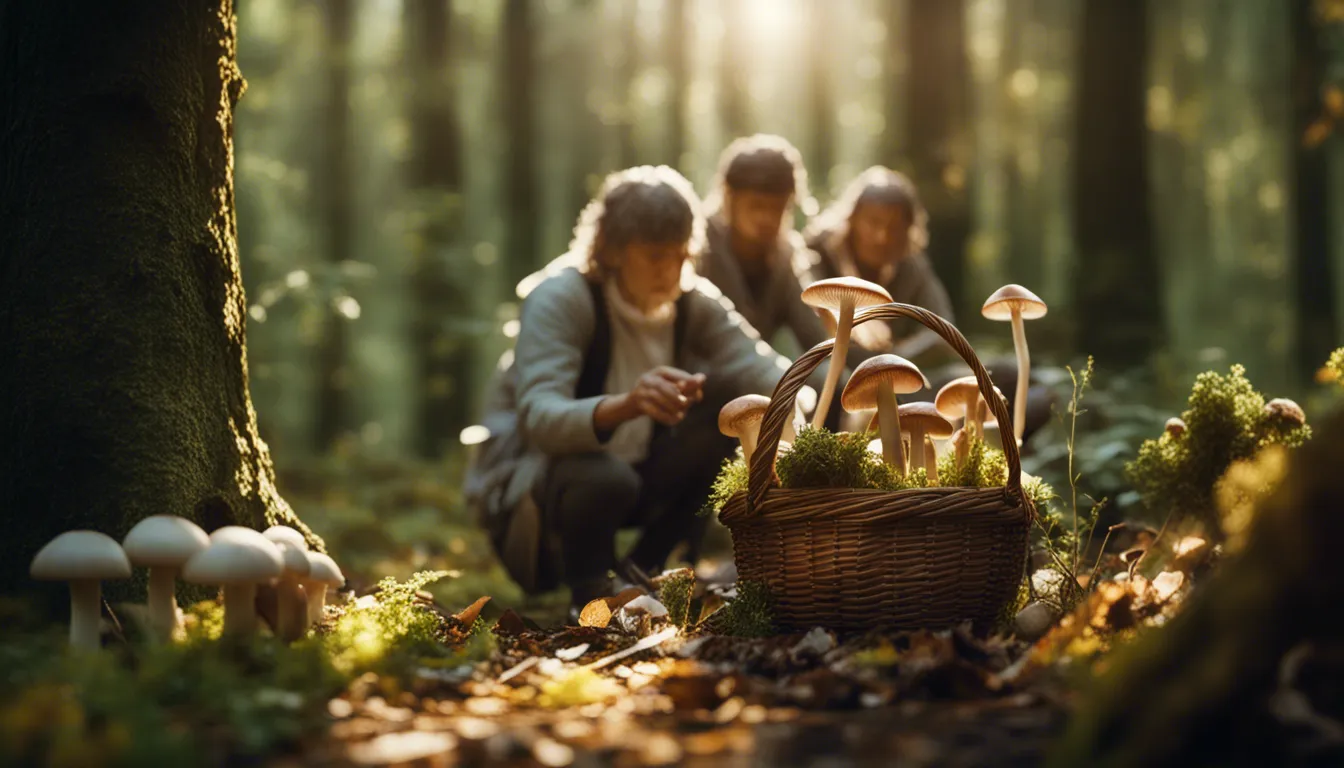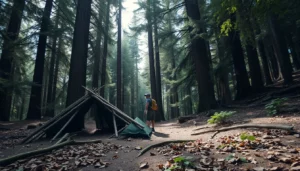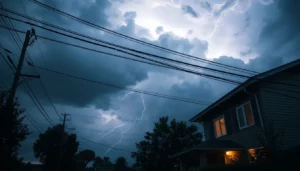In today’s blog post, we are going to give a comprehensive foraging for beginners guide.
Ever wonder if the plants around you could actually be part of your next meal? You’re definitely not alone.
Foraging — the art of gathering wild, edible plants — has become an exciting and sustainable way to connect with nature and add unique flavors to your diet.
It is a very important skill to have for preppers like yourself, especially if you need to be self sufficient in the wilderness or when you have no access to a commercial food source.
This foraging for beginners guide will introduce you to the essentials of safe and ethical foraging, including how to recognize edible plants and build a practical foraging kit that’s easy to carry and keeps your finds fresh.
Introduction to Foraging for Beginners
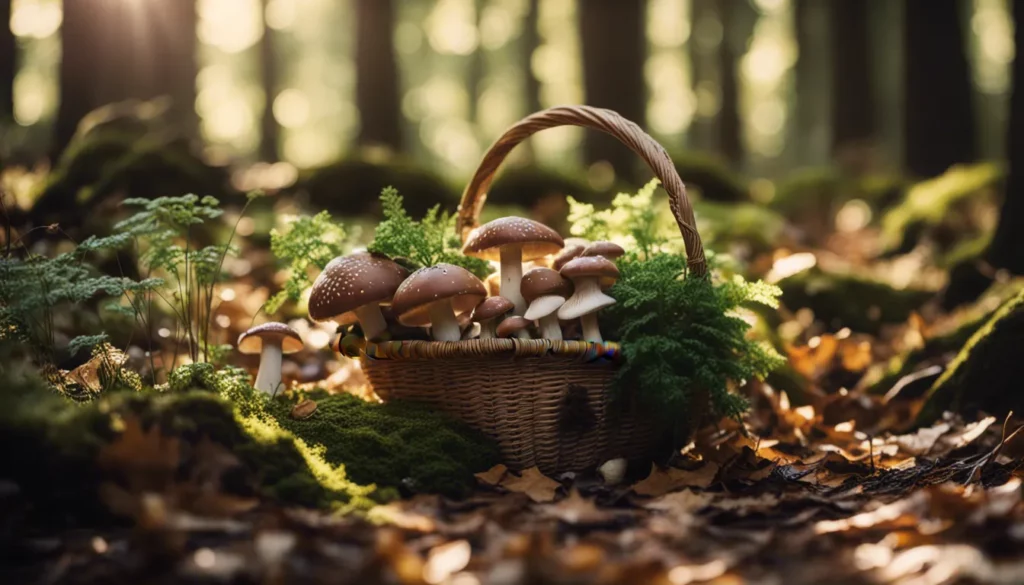
Foraging is about picking wild plants and fungi and an adventure in discovering what nature has to offer.
Learning how to identify edible plants brings a sense of connection to the environment, letting you savor wild foods that are nutritious and unique.
The benefits of foraging are undeniable, rooted in history and renewed in today’s push for sustainability.
Back in World War II, for instance, wild rosehips became a crucial source of vitamin C for making syrup when oranges were scarce.
Today, people are rediscovering foraging as a way to find fresh, local food and deepen their connection to the natural world.
Foraging shifts with the seasons.
Spring delivers young, tender nettles, perfect for teas and soups.
Summer is the time for wild garlic, filling forests with its distinctive scent.
Autumn brings a bounty of blackberries, rosehips, and sweet chestnuts, each with its own flavor profile and use in recipes.
Every season has something unique to offer, encouraging foragers to look forward to new discoveries year-round.
Learning How to Forage in Person
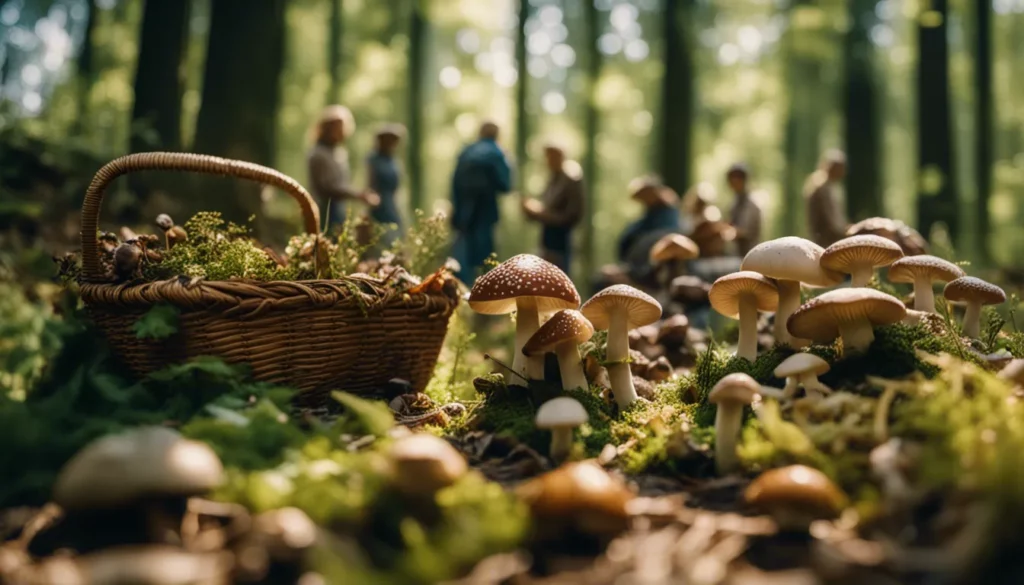
If you’re serious about learning to forage, one of the best ways is to join a local foraging class or walk led by an expert.
These hands-on experiences give you the chance to see plants in their natural habitats, get real-time guidance, and learn the unique features of different edible species.
Look for sessions led by experienced herbalists, botanists, or nature guides in your area.
Many classes are available through community centers, university extension programs, or via foraging groups that host small, accessible workshops.
Class size and activities
Classes are typically limited to around 15 participants, making it easier for each person to receive personal attention.
A typical foraging walk lasts one to two hours, giving you ample time to explore, identify plants, and even learn some basic uses and preparation methods.
For those looking to make it a memorable outing, many foraging organizations offer weekend couple’s retreats. These intimate experiences allow you to dive deeper, foraging together while learning from seasoned instructors.
It’s a relaxed yet educational experience, perfect for sharing as a pair.
Virtual options
And if getting out in person isn’t possible, there are virtual options to bring expert instruction right into your home.
A lot of experienced foragers offer online classes, often over Zoom, which allow you to learn at your own pace and ask questions as they arise.
With a good internet connection, you can join from anywhere and even get a head start on your foraging knowledge before heading outdoors.
Learning How to Forage on Your Own
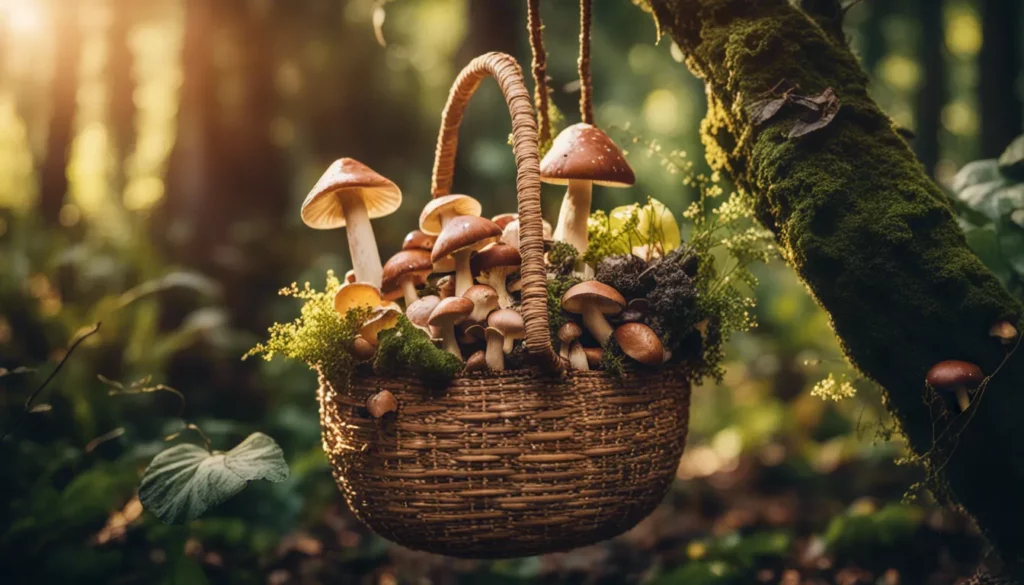
If in-person classes aren’t an option, learning to forage independently is entirely possible with a bit of preparation and patience.
Start small by focusing on one plant at a time, taking the time to understand its key features, the parts that are safe to eat, and the specific environments where it thrives.
Knowing a plant inside out is essential — not just for safety, but also to deepen your appreciation for what nature has to offer.
Resources to gather
Gather resources like trusted field guides, online plant databases, and foraging apps that specialize in identifying wild edibles.
Many of these tools provide high-quality photos, seasonal information, and even recipes to help you feel more confident about your findings.
You might also consider mapping out local parks, forests, or fields where certain plants are more likely to grow, allowing you to practice identifying them in real-life settings over time.
Safety first
Safety is your most important consideration when foraging solo:
- Make sure to learn about look-alike species that could be toxic or harmful, as these are often the biggest risk in foraging.
- Never consume anything you aren’t completely certain about.
- When in doubt, seek expert advice from online foraging communities, experienced foragers, or reference books that focus on plants specific to your region.
Approaching foraging with caution doesn’t take away from the adventure; it makes the process safer and more enjoyable.
With a bit of diligence and curiosity, you’ll gradually build up your knowledge, exploring new plants as your skills grow, and enjoy the satisfaction of discovering wild foods right in your own neighborhood.
How to Identify Wild Plants for Foraging
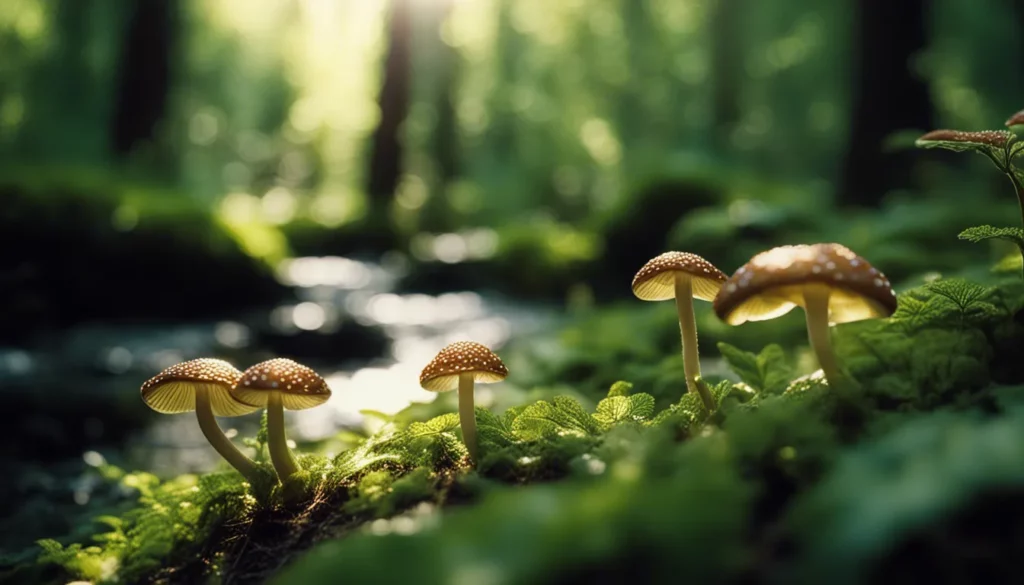
Learning to identify wild plants is essential for a safe and enjoyable foraging experience, and one of the best foraging tips begin with recognizing plant characteristics.
Focus on distinguishing features like leaf shapes, how leaves are arranged along the stem, the texture and edges of leaves, and any unique markings.
These small details are often what set edible plants apart from their inedible or toxic look-alikes.
Tools like dichotomous keys, which guide you through a step-by-step identification process, along with reliable plant identification apps, can be incredibly helpful as you familiarize yourself with new species.
Taking time to observe plants closely and verify your findings makes foraging not only safer but also more rewarding.
With every plant you learn to identify accurately, you gain access to a whole new range of edible options and even medicinal uses, expanding your foraging repertoire.
How to Identify Mushrooms for Foraging
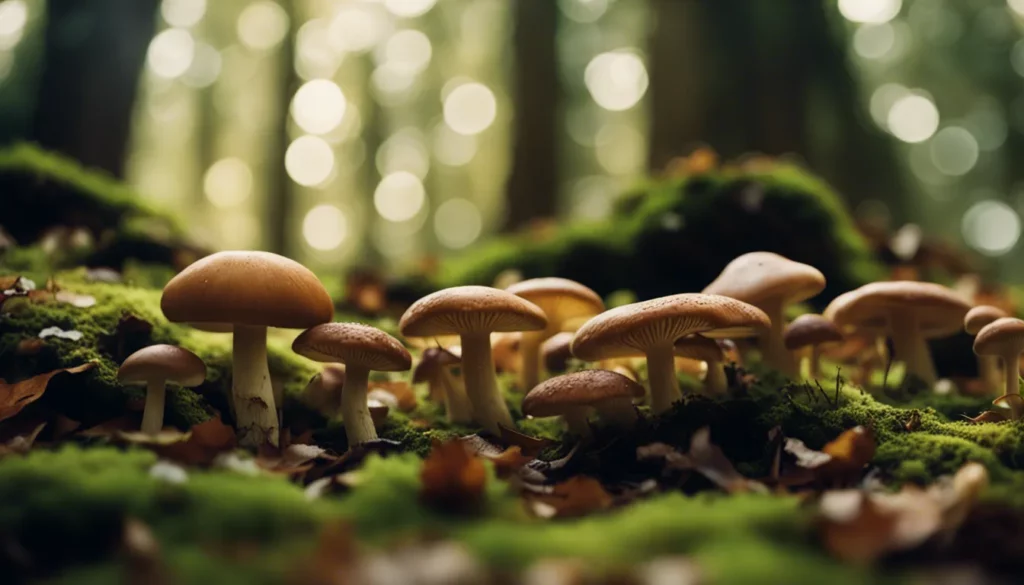
Mushrooms can be incredibly diverse, and identifying them accurately relies on observing key features like spore color, cap and gill structure, stem attachment, and the environment in which they grow.
For instance, certain edible mushrooms, such as morels, oyster mushrooms, chanterelles, and lion’s mane, are popular choices for beginners since they’re both distinctive and delicious with relatively few toxic look-alikes.
However, it’s essential to remember that even these more recognizable varieties require caution.
Recommended resources
One highly recommended resource for mushroom identification is MushroomExpert.com, which offers an extensive collection of details on various species, making it an excellent tool for beginners.
For those looking to delve deeper, the North American Mycological Association (NAMA) provides access to a community of experts and enthusiasts who offer valuable insights into safe mushroom foraging practices.
The importance of caution can’t be overstated; even seasoned foragers know that one misidentification can be harmful.
In the U.S., accidental poisonings do happen, and while fatalities are rare, toxic mushrooms can still cause serious illness if mistaken for edible varieties.
Collecting mushrooms 101
New foragers are often advised to start by identifying mushrooms rather than consuming them right away. This approach allows beginners to build their skills with confidence before moving on to collecting and eating their finds.
When collecting, make sure to cut mushrooms at the base instead of uprooting them, as this helps preserve the underground mycelium network, ensuring future growth.
Practicing good foraging etiquette is equally important — leaving no trace, taking only what you need, and respecting the ecosystem around you are all crucial for sustainable foraging.
Mushroom foraging can be a deeply rewarding activity, but it’s a pursuit that demands patience, responsibility, and a genuine respect for nature’s complexities.
Where to Forage
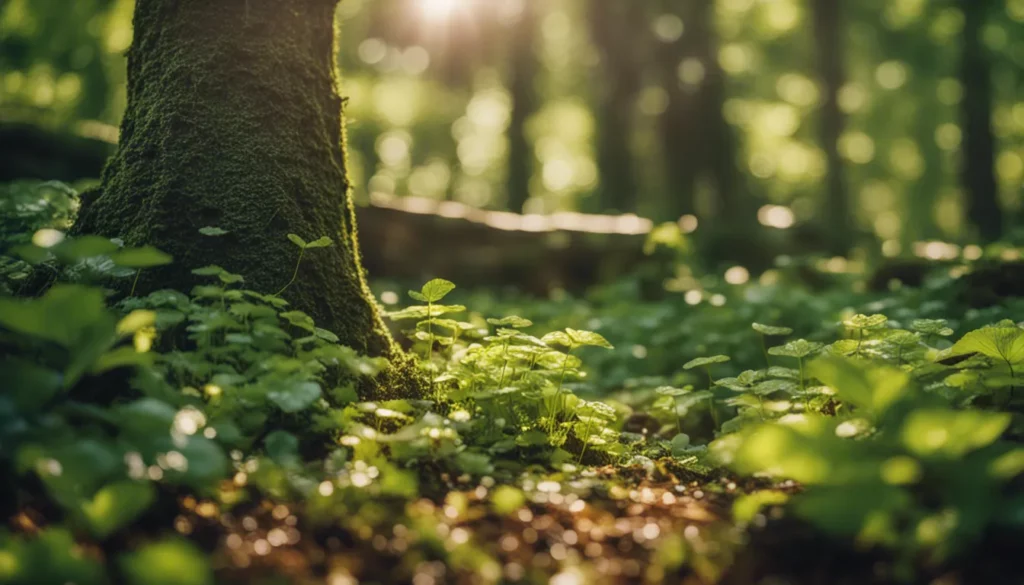
Choosing the right locations for foraging is essential to ensure a successful and responsible experience.
Start by familiarizing yourself with the regulations governing local, state, and national parks.
Each area may have specific guidelines about what you can and cannot collect.
If you plan to forage on private land, always seek permission from the property owner first to avoid any misunderstandings.
Nature offers a diverse range of habitats to explore.
Forests provide a treasure trove of edible delights, including:
- Ferns.
- Various mushrooms.
- Juicy berries
- And even the fresh tips of spruce trees.
These environments often teem with life and are ideal for those looking to discover the wild flavors of the season.
Meadows and gardens can also be rich with wild foods, from dandelion greens to clover flowers, allowing you to tap into nature’s bounty right in your neighborhood.
Ethical Foraging Practices
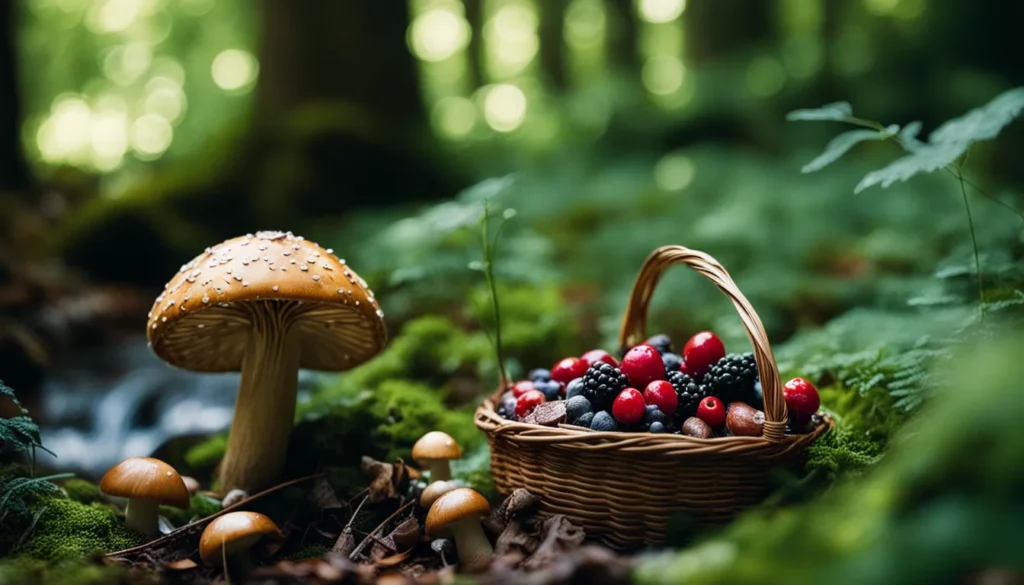
Foraging is also about cultivating a deep respect for the natural world.
Before you venture out, take the time to familiarize yourself with the specific ecosystems in your area.
When gathering from nature, a good rule of thumb is to never take more than 25% of any given plant population. This practice not only allows the plant to continue thriving but also ensures that other wildlife can benefit from the resources.
It’s essential to be mindful of your surroundings, particularly when it comes to endangered species.
If you’re digging up roots or tubers, always remember to fill in the holes afterward to protect the soil and prevent erosion.
Waste management
Proper waste management plays a crucial role in ethical foraging.
Carry out any trash you bring in and avoid making permanent changes to the landscape.
These small but significant actions contribute to the preservation of natural spaces, allowing future generations to enjoy them as you do today.
Foraging Safety
Familiarize yourself with local flora and fungi before heading out; many plants and mushrooms have toxic lookalikes that can pose serious health risks.
Take the time to learn the distinguishing features of edible varieties, and when trying something new, start with a small amount to check for any allergic reactions.
Proper clothing
Dress appropriately for your foraging excursions.
Long pants and sturdy boots not only protect you from thorns and underbrush but also shield you from insects.
Wearing gloves can further safeguard your hands from potential irritants.
It’s also wise to carry a first aid kit. Even minor scrapes can occur when you’re navigating uneven terrain, so being prepared can save you from unnecessary discomfort.
Stay alert while foraging and keep an eye on your surroundings to avoid tripping over roots or rocks, and be cautious of wildlife that may be nearby.
Understanding which plants are harmful can also help you steer clear of accidental encounters with poison ivy or other irritants.
Incorporating these safety measures into your foraging routine enhances your experience in the wild.
Processing Foraged Foods
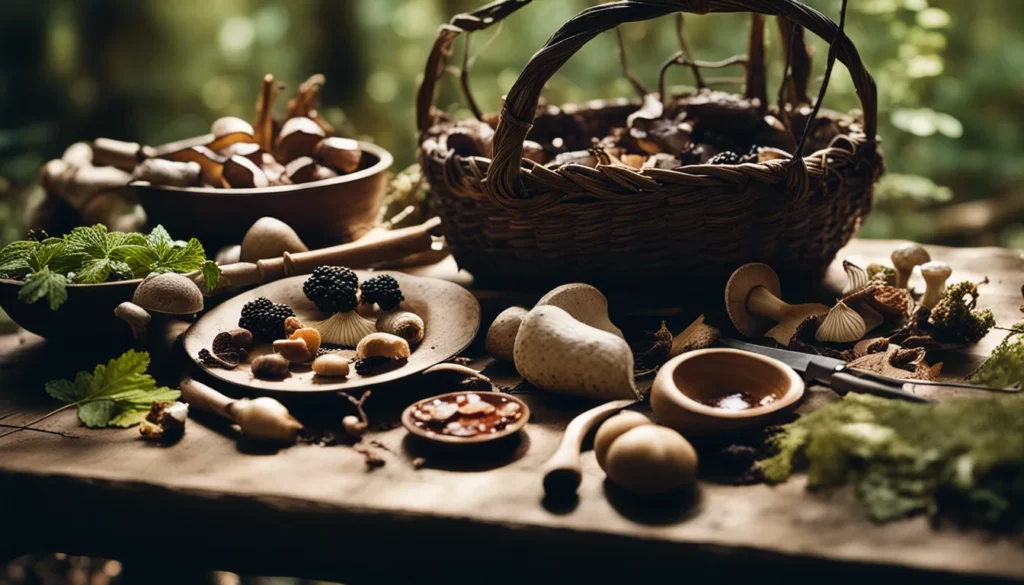
Once you’ve collected your bounty, the first step is to clean everything thoroughly.
Rinsing away dirt and debris not only enhances the taste but also ensures that any contaminants are removed.
Depending on what you’ve foraged, some plants may require peeling, chopping, or other forms of preparation to get them ready for cooking or preserving.
Drying is an effective way to extend the life of your harvest.
Herbs, berries, and mushrooms all benefit from this method, as it concentrates their flavors and makes them easier to store. When you dry these foods, they can become versatile ingredients for soups, stews, or teas, offering a taste of nature long after the season has passed.
Fermentation presents another fantastic option for processing your finds. This age-old technique not only helps to break down potentially harmful compounds but also infuses your food with probiotics, promoting gut health.
Consider fermenting vegetables or foraged fruits to create tangy, flavorful additions to your meals.
Some plants, such as ramps or fiddlehead ferns, require a bit more attention. Blanching or parboiling these varieties can effectively eliminate any toxins, making them safe to eat. It’s vital to understand the specific preparation methods for each type of foraged food.
Doing so allows you to enjoy their unique flavors while ensuring that you’re consuming them safely.
Cooking with Wild Ingredients
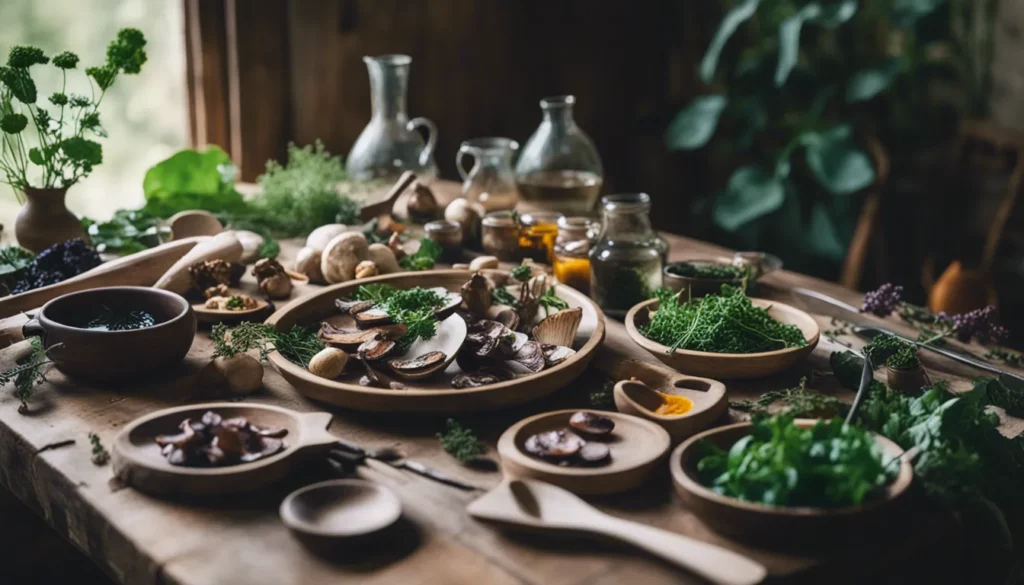
Embracing wild ingredients in your cooking can elevate your culinary experience and introduce you to flavors you never knew existed.
Imagine the burst of freshness from wild greens, the delicate sweetness of foraged flowers, or the nutty richness of freshly gathered nuts. Each ingredient carries a story, connecting you to the land and the changing seasons.
Diversity in cooking techniques can truly bring out the essence of your foraged finds.
Experiment with pickling to preserve the fresh taste of seasonal ingredients, or try fermenting to create probiotic-rich dishes that offer health benefits alongside delightful flavors.
Steaming can maintain the integrity of delicate greens, while searing and stir-frying can create a rich, caramelized exterior that enhances the taste of your harvest.
And don’t forget about the creative potential in beverages and desserts! A refreshing wild cocktail or a sweet elderflower Turkish delight can impress guests and showcase your foraging skills.
Let your imagination guide you as you create new recipes.
Consider classic dishes with a twist, like Stargazy Pie filled with fresh seafood and vibrant herbs, or try making Giant Puffball Steaks for a vegetarian alternative that’s both hearty and flavorful.
The key is to balance simplicity with creativity, allowing the natural flavors of your ingredients to shine.
How to Build a Foraging Kit
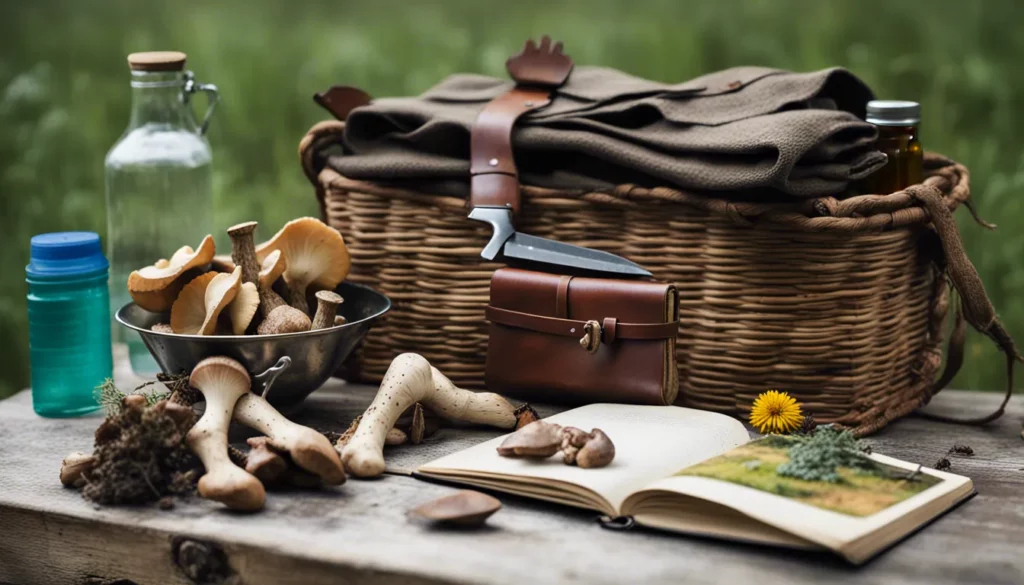
For your foraging kit, start with a reliable field guide that helps you identify various plants and mushrooms is indispensable. This resource will be your companion, guiding you through the often intricate details of foraging.
A sturdy knife or pruners is another must-have, allowing you to harvest with precision.
Look for tools that are durable and easy to maintain.
Felco pruners are a favorite among foragers because they are not only reliable but also allow for replacement parts and sharpening, extending their life.
A Hori hori knife can serve multiple purposes, from digging to slicing, making it an excellent addition to your kit. A robust digging fork can also come in handy, especially when harvesting root vegetables or digging into dense soil.
Consider how you’ll carry your foraged treasures.
A spacious basket or a sturdy bag keeps your finds secure and allows for proper air circulation, which is important for delicate items like mushrooms.
To navigate your surroundings confidently, a compass can help you stay oriented in unfamiliar territory.
Alongside these tools, packing a first aid kit ensures you’re ready for any minor mishaps along the way, providing peace of mind as you immerse yourself in nature.
If you find yourself foraging often, think about adding specialized tools to enhance your experience.
A mushroom brush is perfect for cleaning your finds without damaging them, while a dehydrator can help you preserve herbs and other perishables for later use.
Additionally, having food preservation tools, like jars and vacuum sealers, can be invaluable for storing your bounty and enjoying it year-round.
Safety should always be a priority, so include a good pair of gloves in your kit to protect your hands from thorns and other potential irritants.
Conclusion
Embarking on your foraging journey opens up a world of natural abundance right outside your door.
Whether you choose to learn through guided walks, online classes, or independent study, the key is to start small and build your knowledge gradually.
Remember that every experienced forager began exactly where you are now — with curiosity and a desire to connect with nature’s pantry.
With your foraging kit in hand and proper knowledge in mind, you’ll be well-equipped to discover the incredible diversity of wild foods in your area.
The rewards of foraging extend far beyond the basket of wild ingredients you bring home. You’ll gain a deeper appreciation for seasonal changes, develop a more intimate connection with your local ecosystem, and join a growing community of people who find joy in nature’s abundance.
So take that first step and discover the satisfying adventure of finding your own wild food.

